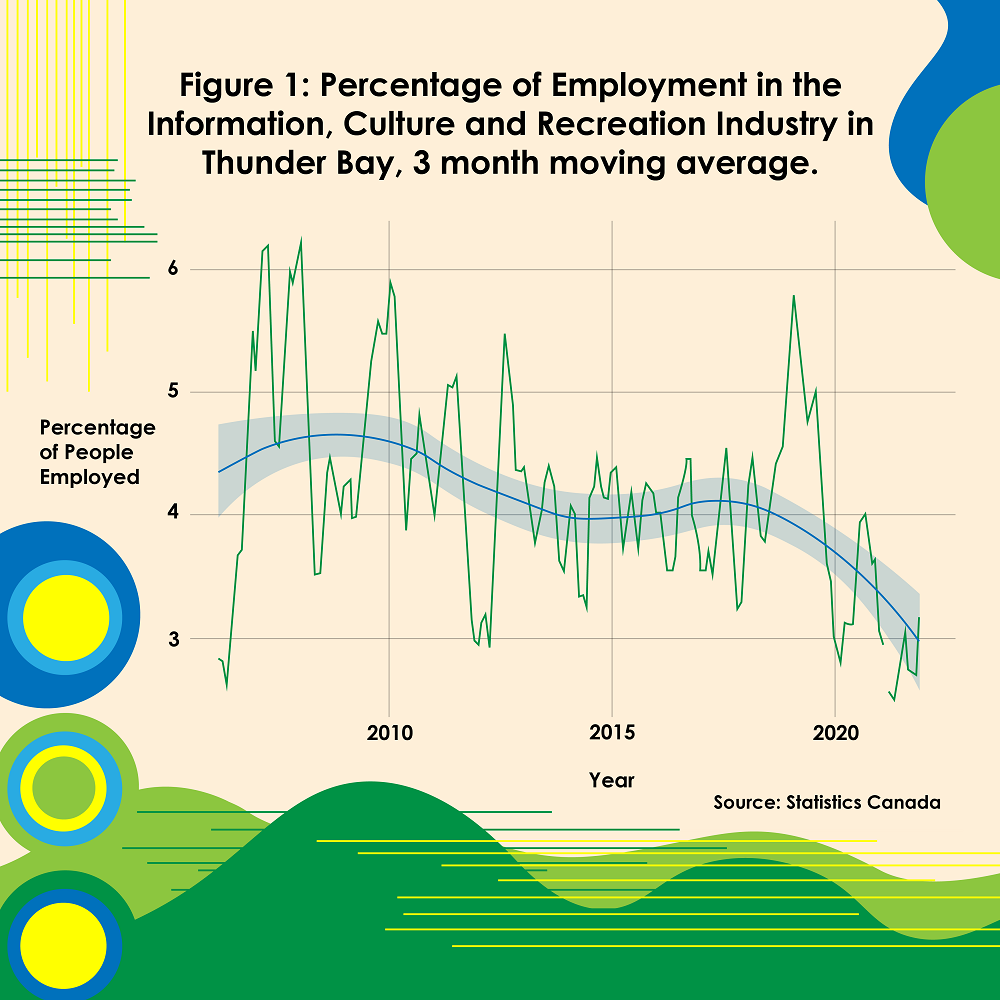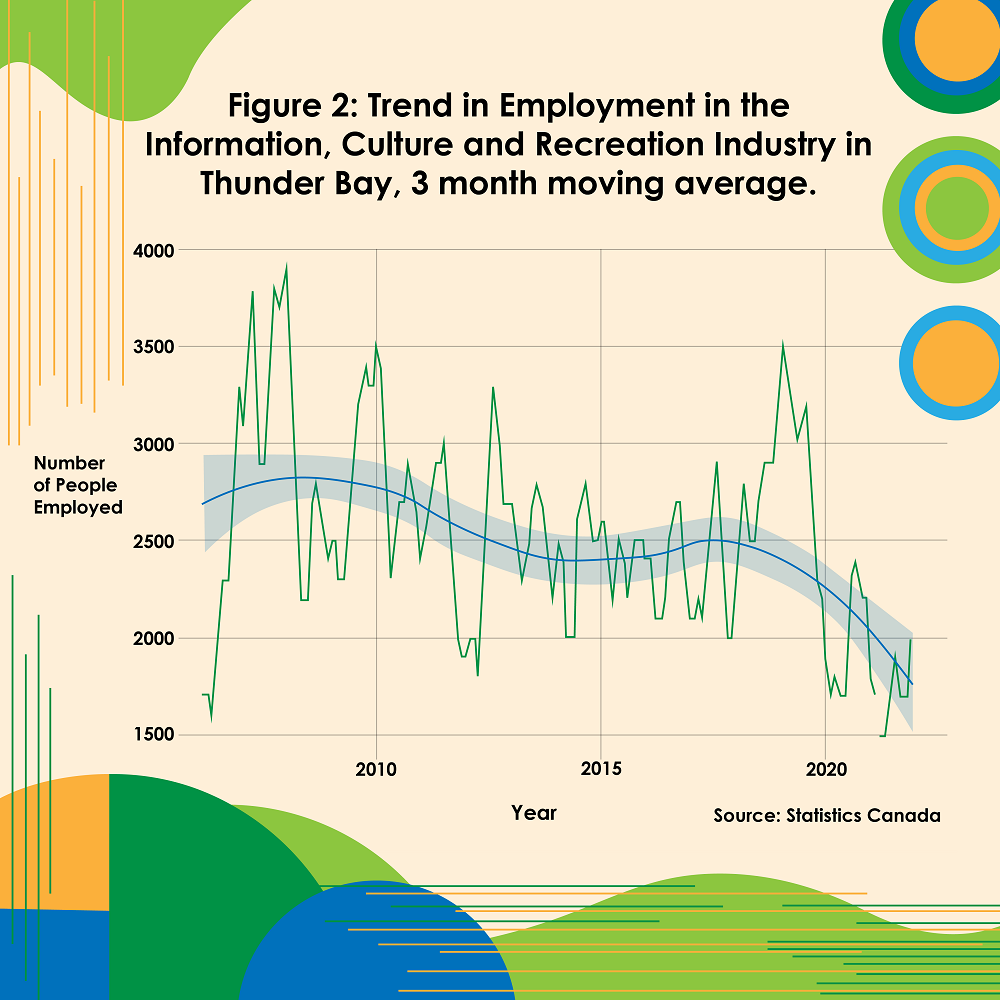The show must go on: painting a picture of the arts, culture and recreation sector in Thunder Bay
March 2, 2022 - This article first appeared in The Walleye Magazine, March issue.

A defining and important aspect of the Thunder Bay community, the arts and culture sector has experienced a major setback due to the Covid-19 pandemic.
As we can see in Figures 1 and 2, there was a significant drop in employment numbers within the information, culture and recreation industry, which signals a decrease in the overall output of the sector. In September 2019 approximately 2,900 were employed within the industry, but after the first lockdown in 2020, employment rates never recovered to what they were in previous years. The post-pandemic period has seen employment rates as low as 2 per cent and at one point, it was so low that the data wasn’t published. As of December 2021, the figure sits at approximately 2,000 total creative workers.
This trend in creative workers was undoubtedly due to the strain caused by the restrictions on social gatherings and changes in consumer behavior following the lockdowns. Under normal conditions, “anywhere from 15,000-25,000 visitors each year” were expected for art galleries and museums in Thunder Bay, but those numbers were heavily impacted due to the pandemic. Numerous exhibitions were either postponed or cancelled. The 2022 Scotties Tournament of Hearts was held without fans in attendance due to health concerns.
Throughout Canada, one of the worst impacted sectors within the industry was the live performance sector. It is heartening to see that the government of Canada is launching initiatives to support live performance industry with a ‘Canada Performing Arts Workers Resilience Fund’, but more must be done to uplift the overall creative economy. As an industry that plays a critical role in the identity of the Thunder Bay community, the holistic protection of the creative sector in a post-pandemic economy is of the utmost importance.

Figure 1: Percentage of Employment in the Information, Culture and Recreation Industry in Thunder Bay, 3 month moving average.

Figure 2: Trend in Employment in the Information, Culture and Recreation Industry in Thunder Bay. 3 month moving average.
Source: Statistics Canada
Kerem Karabeyoglu is an Economist at NPI
Write for us
The content of Northern Policy Institute’s blog is for general information and use. The views expressed in this blog are those of the author and do not necessarily reflect the opinions of Northern Policy Institute, its Board of Directors or its supporters. The authors take full responsibility for the accuracy and completeness of their respective blog posts. Northern Policy Institute will not be liable for any errors or omissions in this information, nor will Northern Policy Institute be liable for any detriment caused from the display or use of this information. Any links to other websites do not imply endorsement, nor is Northern Policy Institute responsible for the content of the linked websites.
Northern Policy Institute welcomes your feedback and comments. Please keep comments to under 500 words. Any submission that uses profane, derogatory, hateful, or threatening language will not be posted. Please keep your comments on topic and relevant to the subject matter presented in the blog. If you are presenting a rebuttal or counter-argument, please provide your evidence and sources. Northern Policy Institute reserves the right to deny any comments or feedback submitted to www.northernpolicy.ca that do not adhere to these guidelines.
